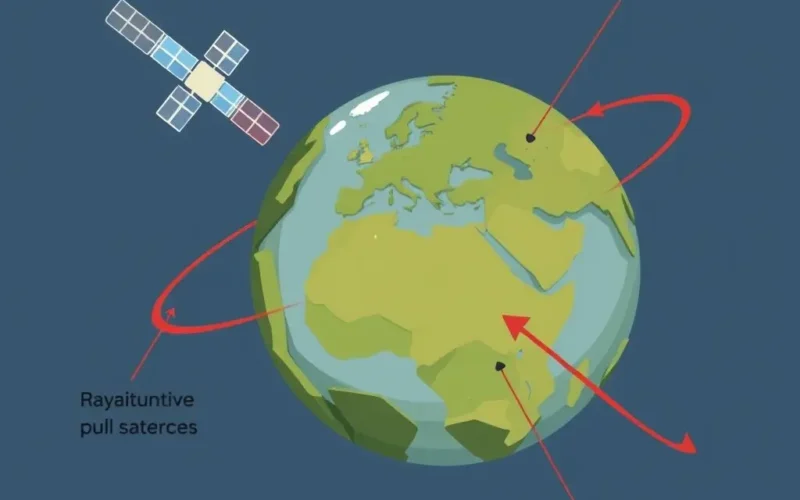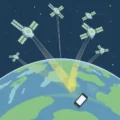Have you ever looked up at the night sky (or used your GPS) and wondered how those metallic birds stay *exactly* where they’re supposed to be, hurtling around our planet without just falling back down or drifting aimlessly into the void? It might seem like once they’re in orbit, they’re just… there. Parked in space. But the reality is far more dynamic, a constant dance requiring incredible precision and subtle corrections.
Orbit isn’t a static state; it’s a continuous fall around the Earth. And even in the apparent emptiness of space, tiny, persistent forces are always at play, subtly nudging these high-tech marvels off course. Think of it less like parking a car and more like balancing on a tightrope stretched across the cosmos.
Before we dive deeper into the fascinating mechanics, take a moment to visualize this constant balancing act. We put together a quick video explaining the core idea:
Table of Contents
The Subtle Nudges: Forces Disrupting Orbits
Orbit is primarily determined by the balance between a satellite’s velocity and the Earth’s gravitational pull. However, this ideal scenario is constantly challenged by a variety of external factors. These forces, though seemingly small, can accumulate over time and cause a satellite to drift from its intended path or change its orbital shape and orientation.
Earth’s Lumpy Gravity
If Earth were a perfect, uniformly dense sphere, its gravity would be predictable and smooth. But our planet is a bit lumpy! Variations in density and the distribution of mass (like mountains, oceans, and tectonic plates) mean that Earth’s gravitational pull isn’t perfectly uniform everywhere. These variations create slight tugs and pulls on a satellite as it orbits, gradually altering its path. This is often referred to as geopotential harmonics.
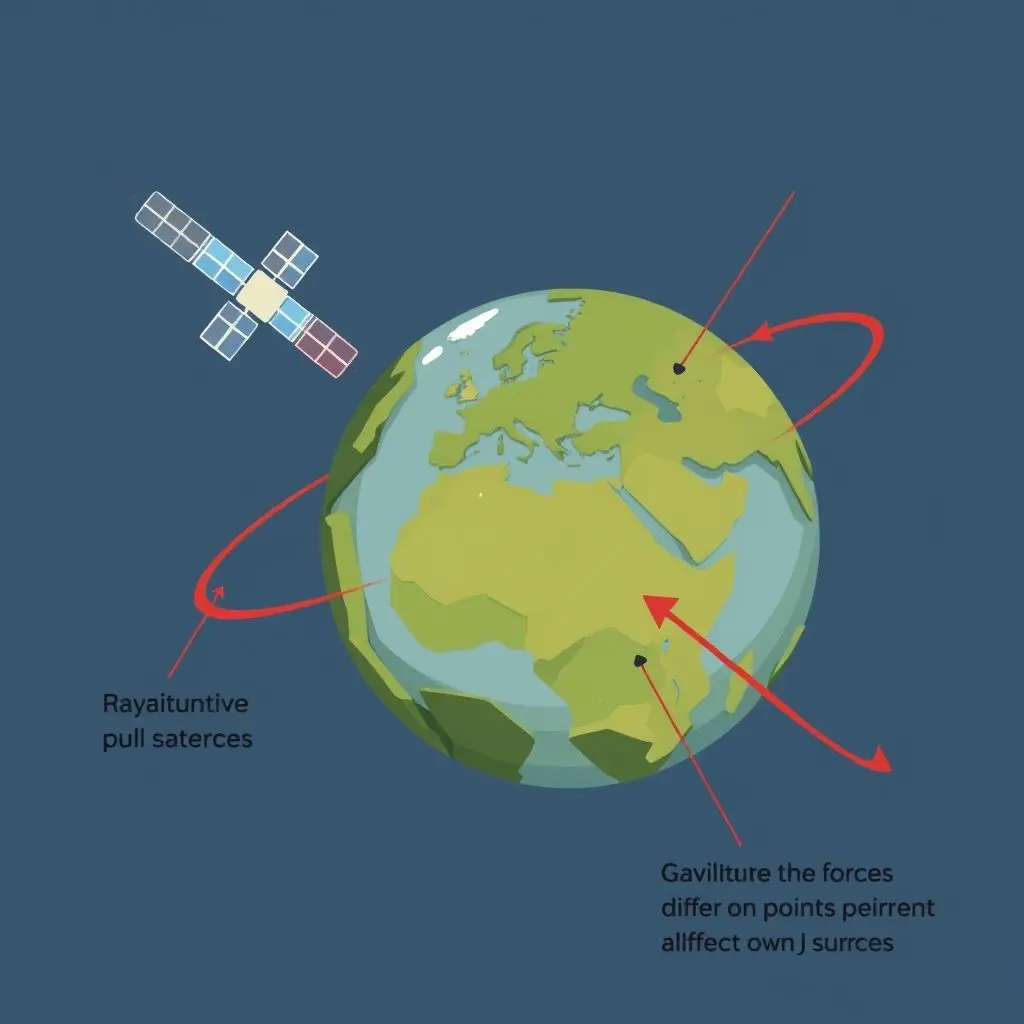
The Pull of Distant Relatives: Moon and Sun
It’s not just Earth; the gravitational pull of the Moon and the Sun also affects satellites, especially those in higher orbits like Geostationary Orbit (GEO). While they are far away, their immense mass exerts a noticeable gravitational influence. These ‘third-body perturbations’ can cause the satellite’s orbital plane to tilt or drift over time.
Whispers of the Atmosphere: Atmospheric Drag
For satellites in Low Earth Orbit (LEO), typically below 1000-2000 km altitude, there’s another significant challenge: the thin wisps of the Earth’s upper atmosphere. Even though it’s incredibly thin at these altitudes, particles collide with the satellite, creating a tiny drag force. This drag acts like a constant brake, slowing the satellite down. When a satellite slows down, gravity pulls it lower, into denser parts of the atmosphere, increasing drag further – a potentially destructive cycle that would eventually lead to re-entry and burn-up if not corrected.
Solar Radiation Pressure
Sunlight isn’t just light and heat; it also carries momentum. When photons from the Sun strike a satellite, they exert a tiny pressure. This solar radiation pressure, especially significant for satellites with large solar panels, can subtly push the satellite around, altering its orbit over long periods.
Station Keeping: The Art of Tiny Corrections
To counteract these persistent disturbances and keep a satellite precisely on its intended orbital path or within a designated ‘orbital box’, operators perform maneuvers known as ‘station keeping’. This isn’t about making large, dramatic changes; it’s about making frequent, tiny adjustments to nudge the satellite back into line.
The Tools: Onboard Thrusters
The primary tools for station keeping are small onboard propulsion systems, often called thrusters or reaction control systems (RCS). These are typically small rocket engines that expel a propellant to generate a precise force in a specific direction.
- **Chemical Thrusters:** Many satellites use small chemical thrusters, firing propellant like hydrazine. These provide relatively high thrust for short bursts.
- **Electric Thrusters:** Some modern satellites, particularly for GEO or deep space, use highly efficient electric propulsion (like ion thrusters). These provide very low thrust but can fire for extended periods, consuming much less propellant mass.
The key is that these thrusters are fired for incredibly short durations – often fractions of a second or just a few seconds at a time. These brief bursts impart a tiny change in velocity (a ‘delta-v’) to the satellite, just enough to counteract the cumulative effect of the disruptive forces since the last maneuver.
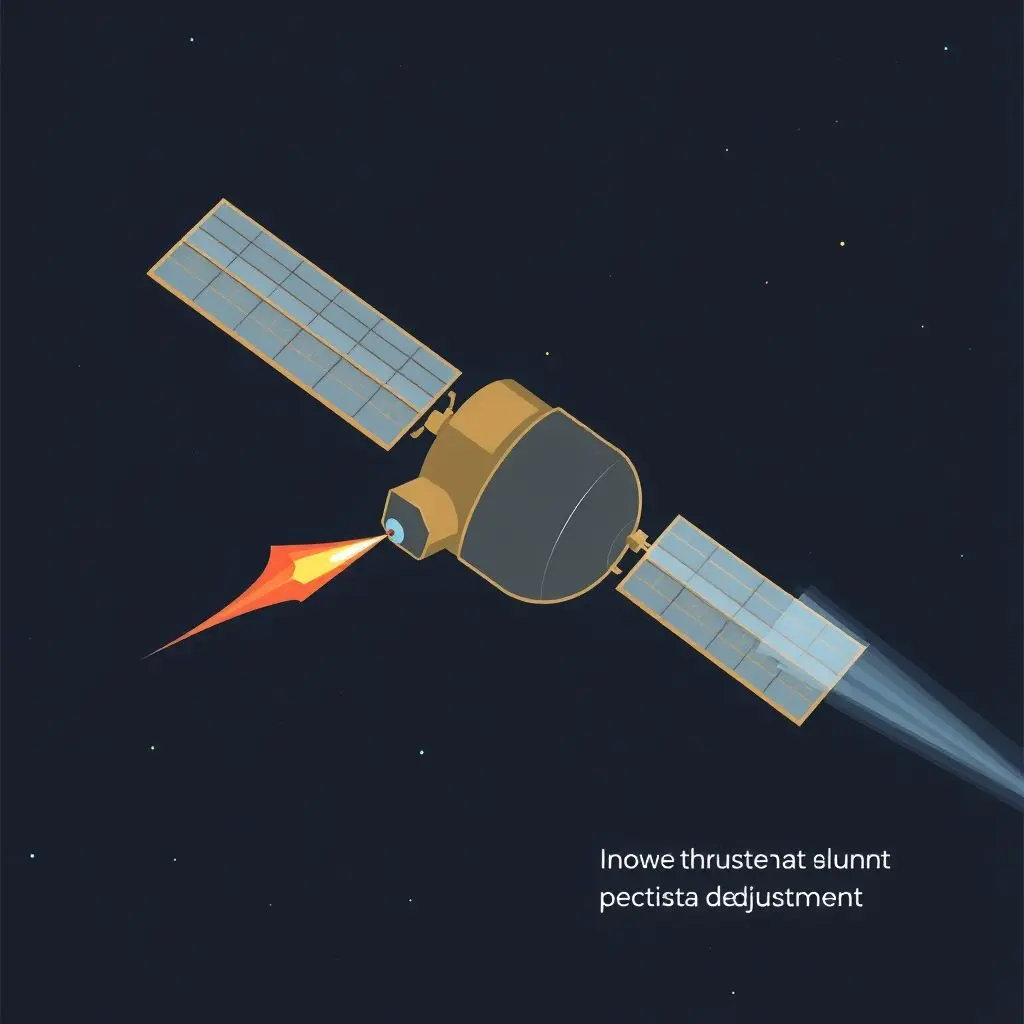
The Brains Behind the Burn: Ground Control
These maneuvers aren’t random. They are meticulously planned and executed by teams on the ground. Ground stations constantly track the satellite’s exact position and velocity. Orbit determination specialists analyze this data to predict how the satellite’s orbit will change due to the disruptive forces.
Based on these predictions and the requirements for the satellite’s specific mission (e.g., staying within a tight box for geostationary communication, maintaining a specific ground track for Earth observation), engineers calculate the precise direction, magnitude, and duration of the required thruster firings. These commands are then uploaded to the satellite, which executes the maneuver autonomously at the scheduled time.
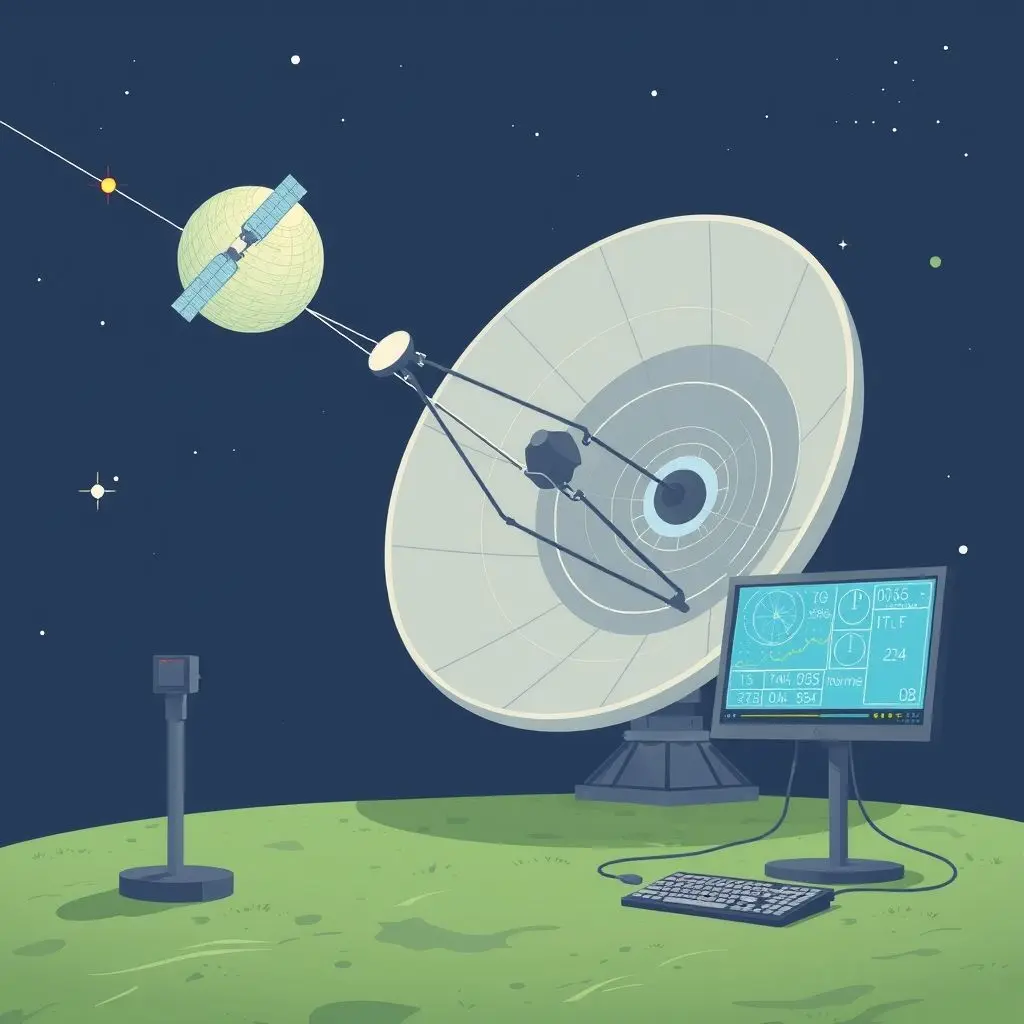
Why Precision Matters: Mission Critical Orbits
Maintaining an exact orbit isn’t just about neatness; it’s fundamental to the satellite’s purpose:
- **Communication Satellites (GEO):** Need to stay in a specific spot relative to Earth’s surface to provide continuous service to ground antennas pointed at that location.
- **Navigation Satellites (MEO – like GPS):** Require precise, predictable orbits to ensure accurate timing and positioning signals reach users on the ground.
- **Earth Observation Satellites (LEO/Polar):** Often need to maintain a specific altitude and ground track to cover certain areas repeatedly or follow a sun-synchronous path for consistent lighting conditions.
- **Space Telescopes/Science Satellites:** Many require highly stable or specific orbits away from Earth’s atmospheric distortion or magnetic field for optimal data collection.
Any significant deviation can degrade or even prevent the satellite from performing its intended function.
FAQs About Satellite Orbit Maintenance
Q: How often do satellites need these adjustments?
A: It varies greatly depending on the orbit and the satellite. LEO satellites experiencing more drag might need corrections every few days or weeks. GEO satellites might need minor adjustments every few weeks or months.
Q: How long does a satellite’s fuel last for station keeping?
A: Fuel is often the limiting factor for a satellite’s operational lifespan. Missions are planned with enough fuel for a target life (e.g., 15 years for GEO). Once the fuel runs out, the satellite can no longer maintain its precise orbit.
Q: Can satellites maintain orbit forever?
A: No. Due to the constant need for corrections and finite fuel supply (for most propulsion types), satellites cannot maintain their exact orbits indefinitely. Eventually, they are either boosted to a ‘graveyard orbit’ (for GEO satellites) or deorbited to burn up in the atmosphere (for LEO satellites) to avoid becoming space debris.
Q: Are there other ways satellites control orientation or position?
A: Yes, satellites also use reaction wheels or control moment gyroscopes to change their orientation (which direction they are pointing) without expelling mass. However, maintaining the *orbital path* itself requires the application of external force via thrusters or other propulsion methods.
More Than Just Floating
So, the next time you use satellite TV, navigate with GPS, or see stunning images from space, remember the unseen work happening high above. Satellites aren’t just passively floating; they are actively, constantly, and precisely maintaining their position against a barrage of subtle forces. It’s a testament to incredible engineering and continuous vigilance from teams on Earth – a true cosmic tightrope walk where stability is achieved through perpetual, tiny corrections.
